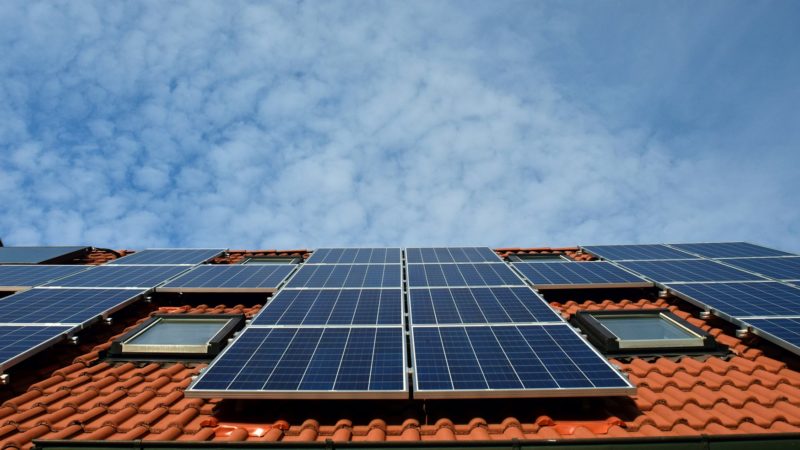UK
Exclusive: Labour launches ‘just transition’ climate working group

Matthew Pennycook has launched a ‘just transition’ working group with unions, industry leaders and members of the climate movement to ensure fairness is at the heart of the party’s approach to decarbonisation, LabourList can reveal.
Commenting ahead of its first meeting today, which will be joined by Keir Starmer, Pennycook said the transition to a net-zero economy cannot be left to “the whims of the market, as was the case with the deindustrialisation of the 1980s”.
“Social justice must be at the centre of our response to the climate and environment emergency and fairness must shape our approach to the green transition here at home,” the shadow climate change minister told LabourList this morning.
“We have to actively shape the green transition so that people and places are protected throughout, its promised economic benefits realised here at home and public support sustained. This working group will help us meet that challenge.”
Labour explained the initiative’s aim is to provide a forum for dialogue with workers and trade unions, non-governmental organisations, business and industry leaders as well as communities on the process of decarbonising the economy.
Membership of the just group includes shadow ministers Pennycook and Alan Whitehead, representatives from Unite, GMB, UNISON, Prospect and Community, as well as from Green New Deal UK and the New Economics Foundation.
The group will consider the “practical, feasible, affordable and fair policy responses” required with a focus on what transition means for individual sectors such as oil and gas, steel, offshore wind, hydrogen, heat and buildings, and agriculture.
Labour has said that the body will “further develop Labour’s distinctive approach” to the transition to a net-zero economy and feed into the party’s wider policy development processes.
“Tackling the climate emergency and realising the enormous potential that transitioning to a green economy holds, is the defining challenge of the next decade,” Keir Starmer said today.
“By putting Labour values at the heart of the solutions, we can tackle the climate crisis, protect our natural environment, generate highly skilled sustainable jobs and investment in every region, as well as tackling sustained inequalities that are holding people back.
“Underpinning the drive to decarbonise our country must be both ambition and fairness. The Labour Party will ensure that is the case.”
Labour set out its plan for a drive towards a clean economy focusing on the UK manufacturing sector last November, calling for a rapid stimulus package of at least £30bn over the next 18 months with dedicated funding to low-carbon industries.
The programme is aimed at recovering jobs, retraining workers via an emergency training programme to equip those affected by Covid unemployment, and rebuilding business with the creation of a national investment bank.
The green-conscious investment bank, a policy promoted by John McDonnell when he was Shadow Chancellor, would work similarly to those in other countries and ensure that investment always supported the path to net zero.
The Conservative government sold the UK’s green investment bank in 2017, five years after it was formed, to Australian financial group Macquarie. The move was criticised at the time by activists and MPs as “deeply regrettable”.
The proposals were developed after a consultation launched in June last year invited businesses, sector associations, trade unions, workers, campaign groups and the public to submit ideas for a green new deal in the wake of Covid-19.
Then Shadow Chancellor Anneliese Dodds told conference in September that the UK needed a “broader perspective on our environment” and that green employment is “not just about high-technology jobs in renewable energy”.
In a speech earlier this year, Starmer argued that pepole are looking for a government that “puts tackling the climate emergency at the centre of everything we do”. “That’s what I mean when I talk of a future where Britain can be the best place to grow up in and the best place to grow old in,” he added.
Below is the full list of members of the just transition working group.
Shadow climate change minister: Matthew Pennycook MP, chair
Shadow minister for energy and the green new deal: Alan Whitehead MP, vice-chair
Unite: Jim Mowatt, director of education (covering energy)
UNISON: Matt Lay, national officer (energy)
GMB: Andy Prendergast, acting national secretary
Community: Alasdair McDiarmid, operations director
Prospect: Sue Ferns, deputy general secretary
Energy UK: Emma Pinchbeck, chief executive
RenewableUK/GWEC: Rebecca Williams, head of policy and regulation
Green New Deal UK: Fatima Ibrahim, executive director
New Economics Foundation: Chaitanya Kumar, head of environment and green transition















